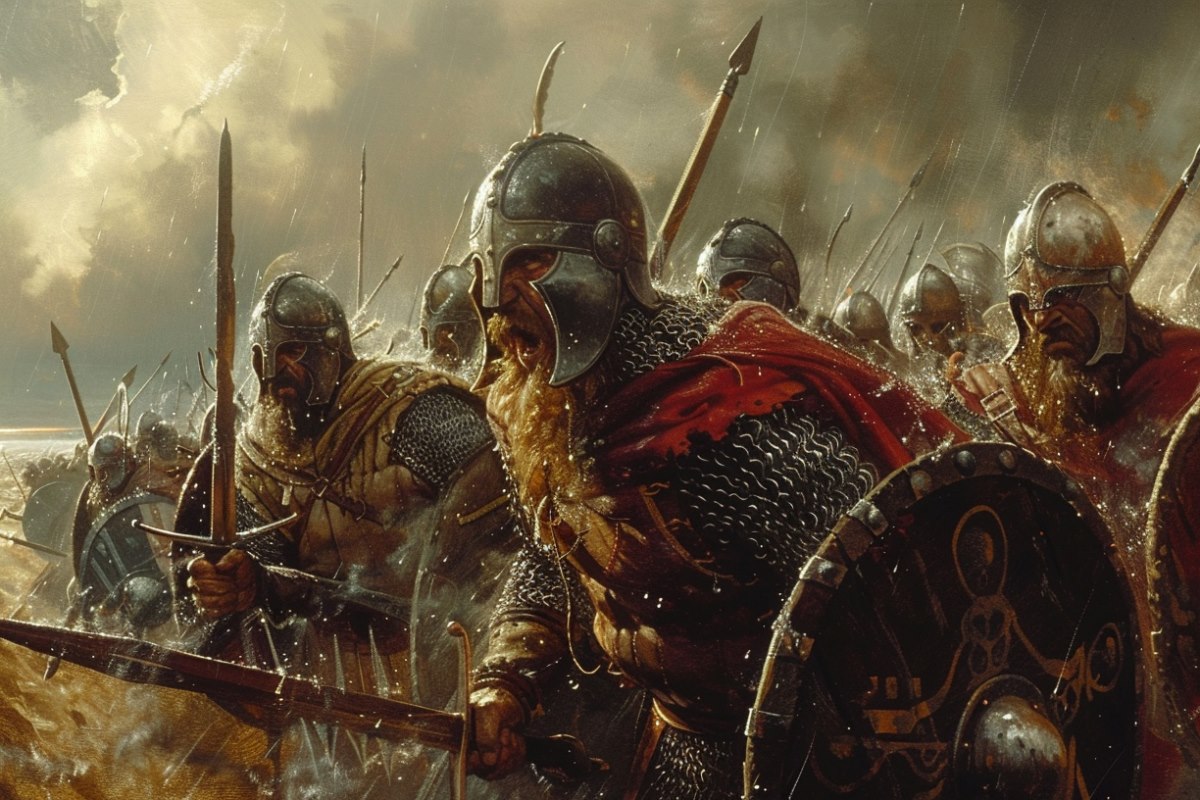
Cnut the Great stands out as one of history's most intriguing rulers. Born around 995 AD, he became King of England in 1016 after a series of fierce battles. But how did he manage to conquer England and maintain control over such a vast territory? Cnut's conquest wasn't just about brute force; it involved strategic alliances, clever diplomacy, and a deep understanding of the political landscape. His reign marked a significant shift in English history, blending Norse and Anglo-Saxon cultures. From his early life to his eventual rule over a North Sea empire, Cnut's story is filled with fascinating twists and turns. Let's dive into 30 captivating facts about Cnut the Great's conquest of England.
Key Takeaways:
- Cnut the Great, a Viking king, conquered England after a decisive battle. His reign brought peace and stability, and he's remembered for his humility and wise rule.
- Cnut's legacy as a powerful and pious ruler extended beyond England, shaping the history of the Viking world. His descendants continued to influence English and Scandinavian history.
Cnut's Early Life
Cnut the Great, also known as Canute, was a Viking king who ruled over England, Denmark, and Norway. His life before becoming king is filled with fascinating details.
- Cnut was born around 995 AD, likely in Denmark.
- His father was Sweyn Forkbeard, the King of Denmark.
- Cnut had a brother named Harald II, who became King of Denmark after Sweyn's death.
- He was known for his physical strength and military prowess from a young age.
The Invasion of England
Cnut's conquest of England was a significant event in medieval history. It marked the beginning of a new era for the English throne.
- In 1013, Sweyn Forkbeard invaded England and declared himself king.
- Sweyn's death in 1014 led to Cnut's first attempt to claim the English throne.
- Cnut's initial invasion in 1014 was unsuccessful, forcing him to retreat to Denmark.
- He returned in 1015 with a stronger force, determined to conquer England.
The Battle of Assandun
The Battle of Assandun was a decisive conflict that played a crucial role in Cnut's conquest of England.
- The battle took place on October 18, 1016.
- Cnut's forces faced the English army led by King Edmund Ironside.
- Cnut emerged victorious, solidifying his claim to the English throne.
- The battle's location is believed to be in Essex, though the exact site remains uncertain.
Cnut Becomes King
After his victory at Assandun, Cnut's path to the English throne became clearer. His reign brought significant changes to England.
- Cnut and Edmund Ironside agreed to divide England, with Cnut ruling the north and Edmund the south.
- Edmund's death in November 1016 left Cnut as the sole ruler of England.
- Cnut was crowned King of England in 1017.
- He married Emma of Normandy, the widow of King Æthelred the Unready, to strengthen his claim.
Cnut's Reign
Cnut's reign over England was marked by stability and prosperity. He implemented various policies that benefited his subjects.
- He maintained the existing English legal system, ensuring continuity.
- Cnut issued laws that promoted peace and order throughout the kingdom.
- He established a strong navy to protect England from potential invasions.
- Cnut was known for his piety and support of the Christian Church.
Cnut's Empire
Cnut's ambitions extended beyond England. He sought to create a North Sea Empire that included Denmark and Norway.
- In 1018, Cnut became King of Denmark after his brother Harald's death.
- He conquered Norway in 1028, adding it to his growing empire.
- Cnut's empire was one of the largest in Europe at the time.
- He maintained control over his territories through a network of loyal nobles and officials.
Legacy of Cnut the Great
Cnut's legacy is still remembered today. His reign had a lasting impact on England and the wider Viking world.
- Cnut's rule brought a period of relative peace and stability to England.
- He is often regarded as one of the most effective and wise rulers of his time.
- Cnut's descendants continued to influence English and Scandinavian history.
- His story has been immortalized in various sagas and historical texts.
- Cnut's reign marked the end of the Viking Age in England.
- He is remembered for his famous demonstration of humility, where he showed that even a king could not control the tides.
Cnut's Legacy Lives On
Cnut the Great's conquest of England wasn't just a fleeting moment in history. His reign brought stability and prosperity to a land previously torn by conflict. By blending Danish and Anglo-Saxon cultures, he created a unique legacy that influenced the future of England. His efforts in lawmaking, administration, and fostering trade left a lasting impact. Even today, Cnut's story reminds us of the power of unity and the importance of strong leadership. His ability to govern diverse peoples under one rule remains a testament to his skill and vision. As we reflect on these 30 facts, it's clear that Cnut's influence extends far beyond his time, shaping the course of English history in ways still felt today.
Frequently Asked Questions
Was this page helpful?
Our commitment to delivering trustworthy and engaging content is at the heart of what we do. Each fact on our site is contributed by real users like you, bringing a wealth of diverse insights and information. To ensure the highest standards of accuracy and reliability, our dedicated editors meticulously review each submission. This process guarantees that the facts we share are not only fascinating but also credible. Trust in our commitment to quality and authenticity as you explore and learn with us.
